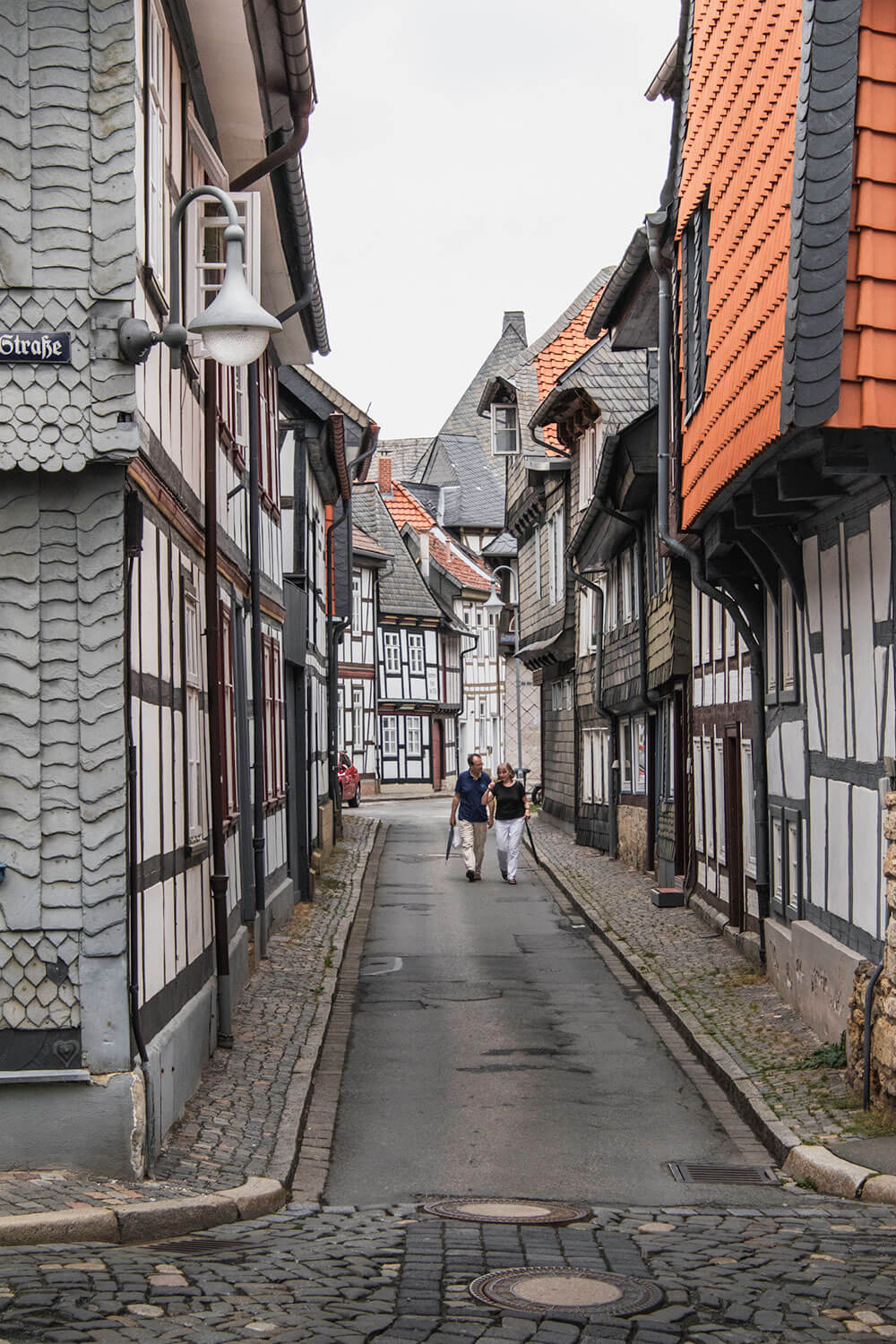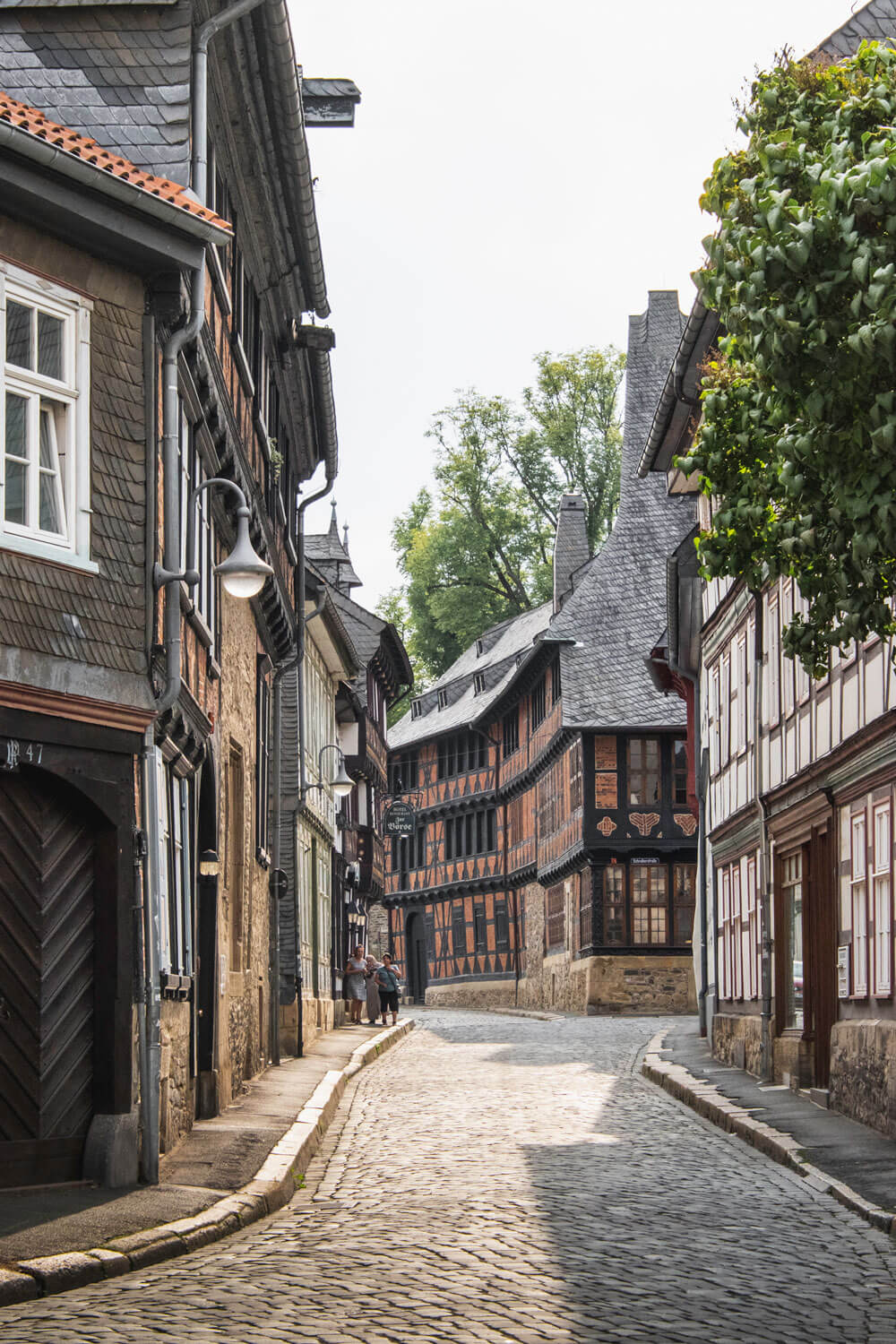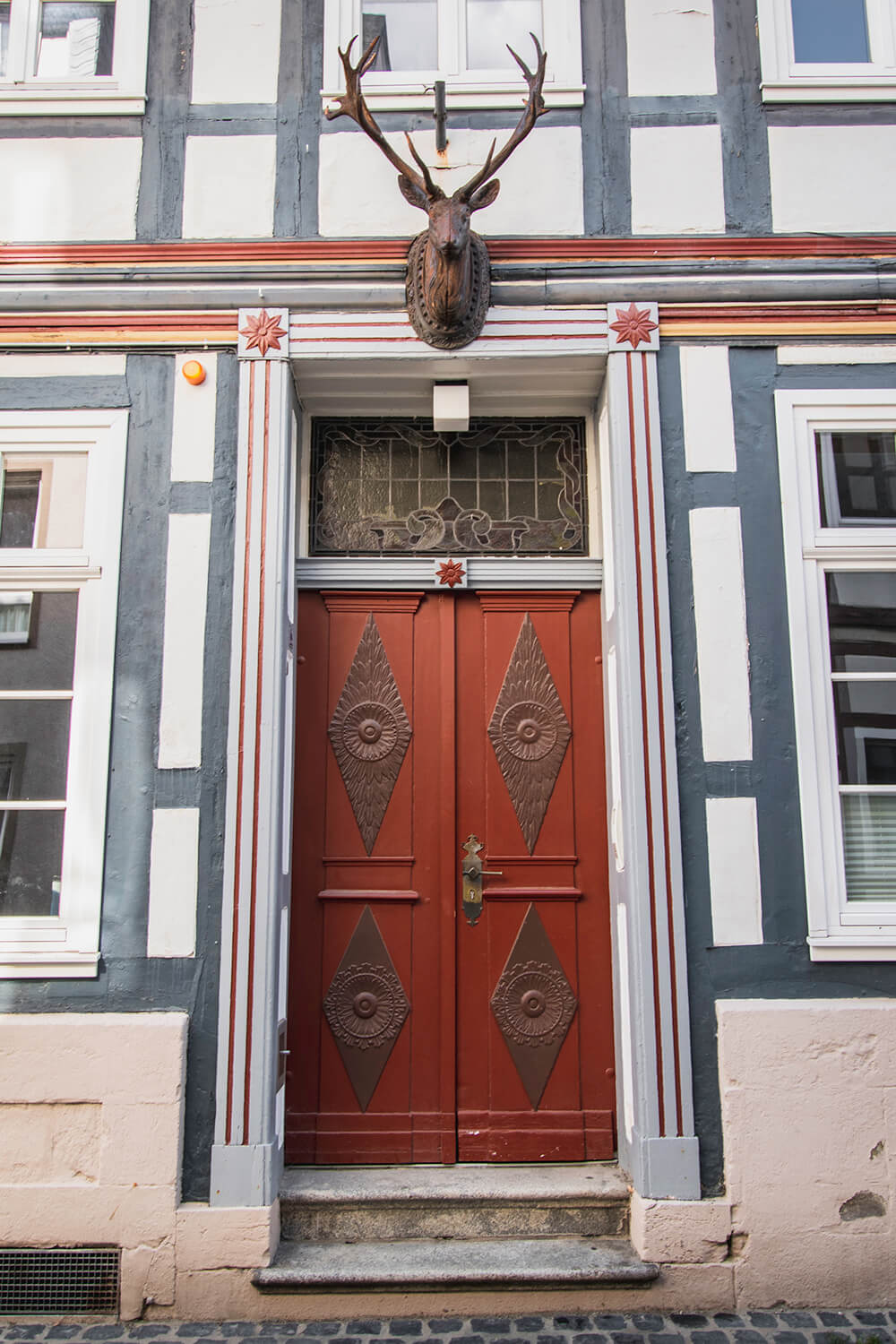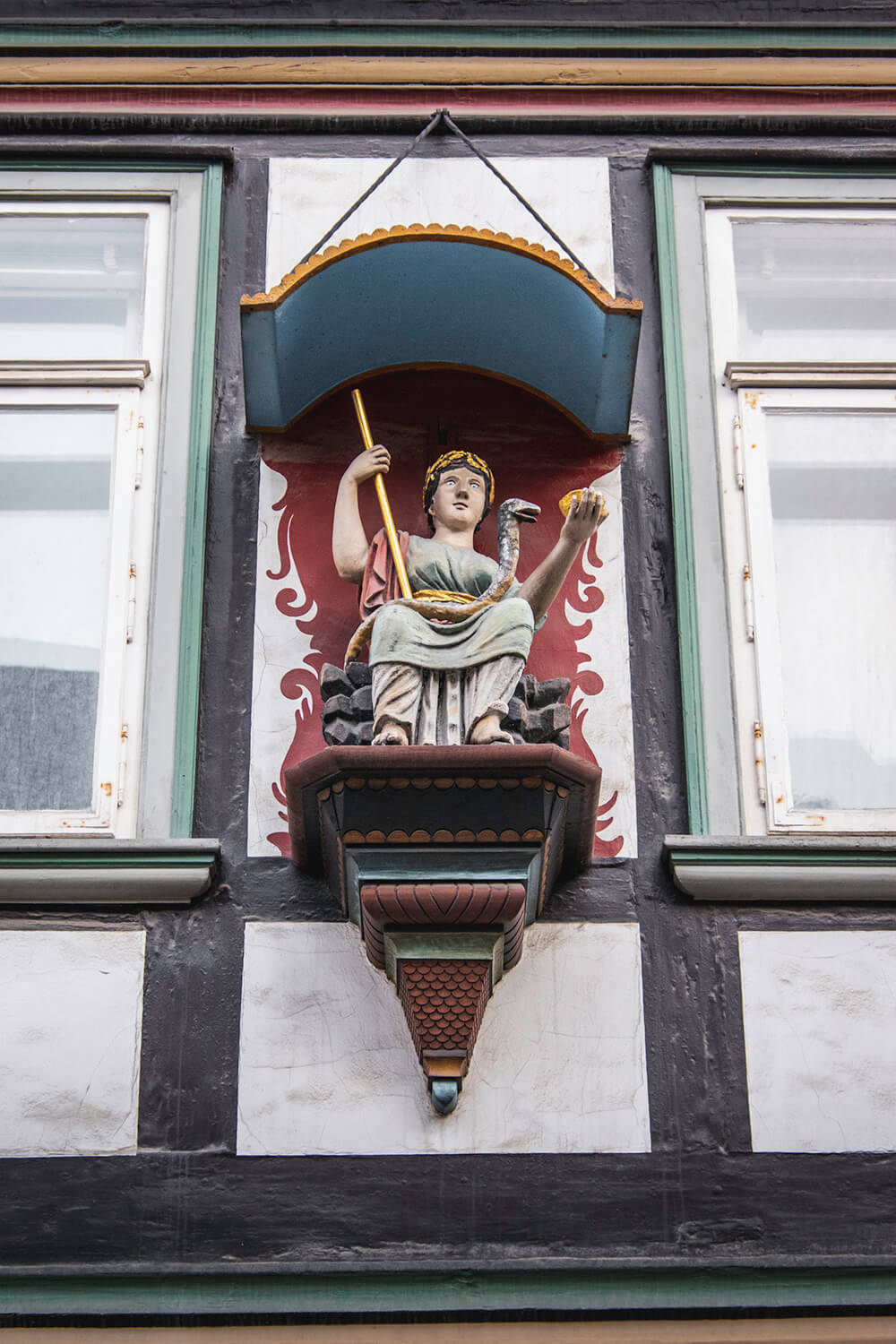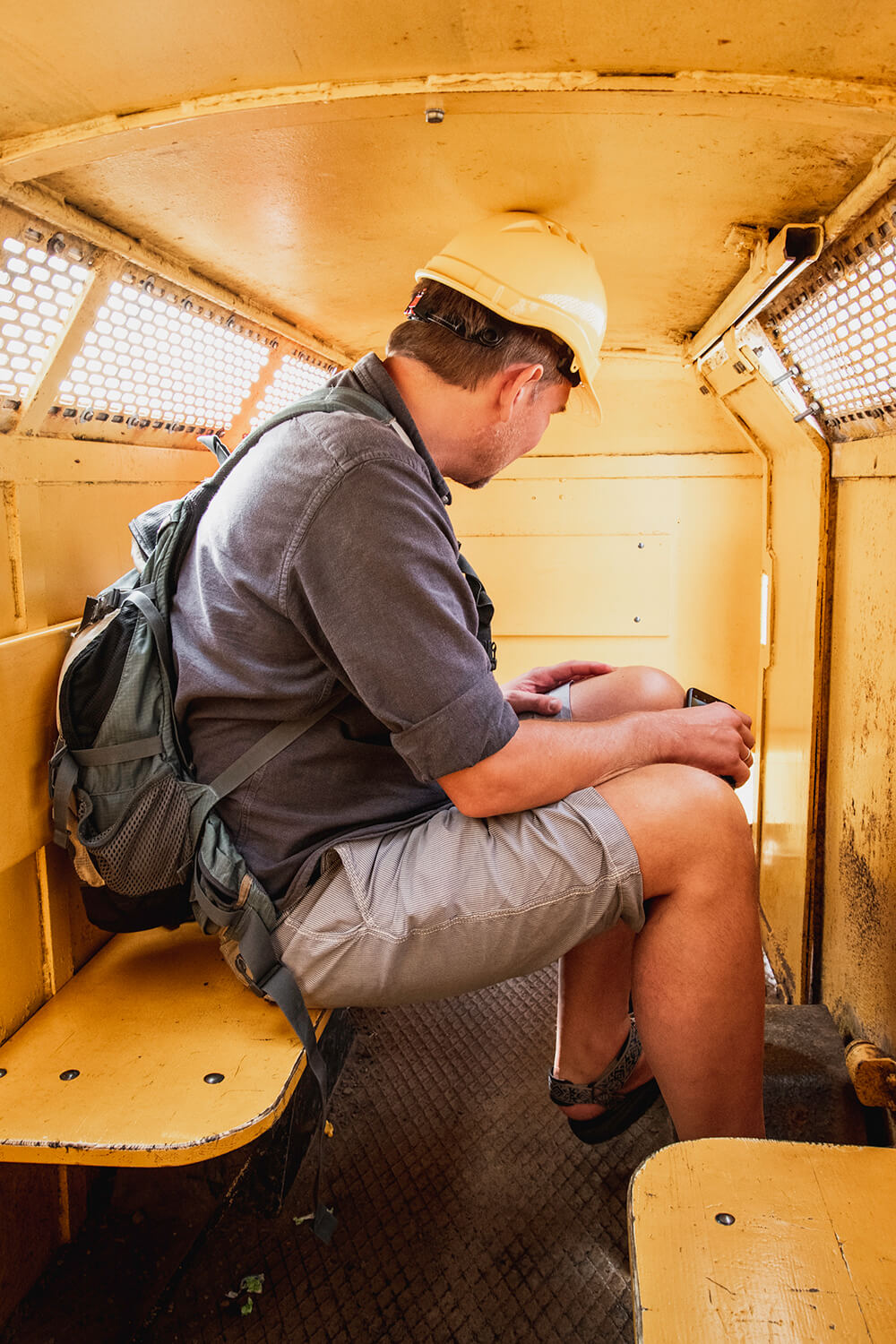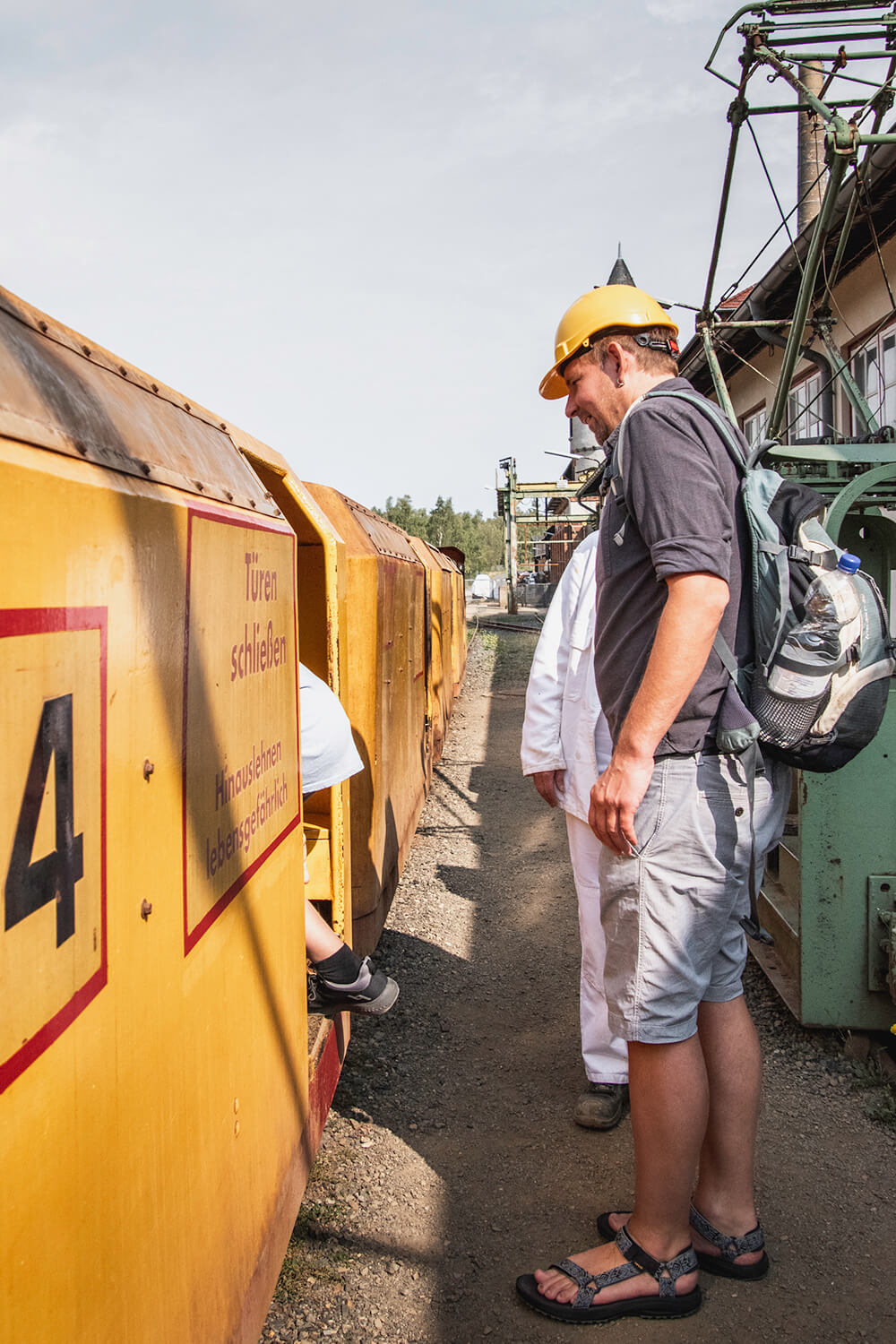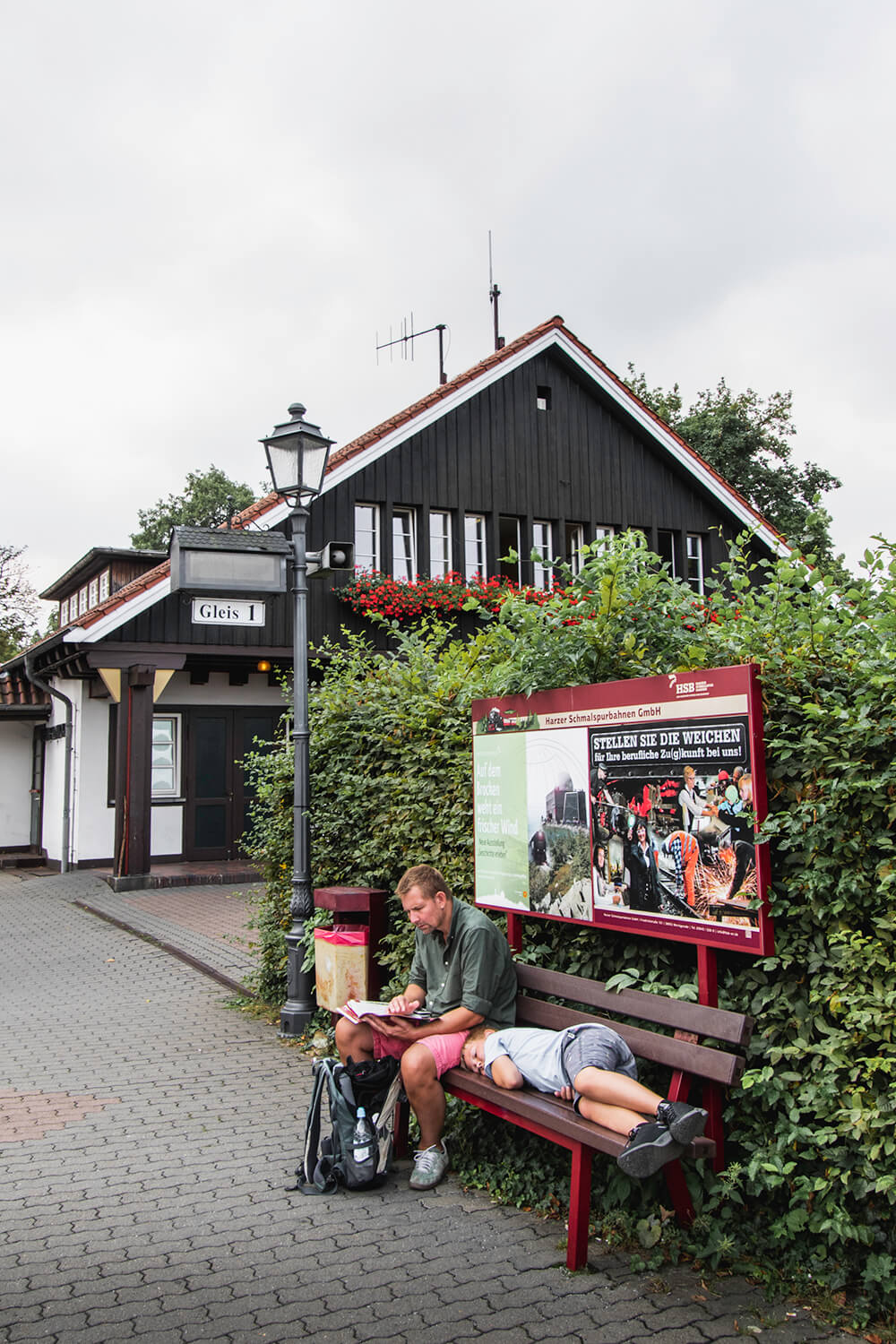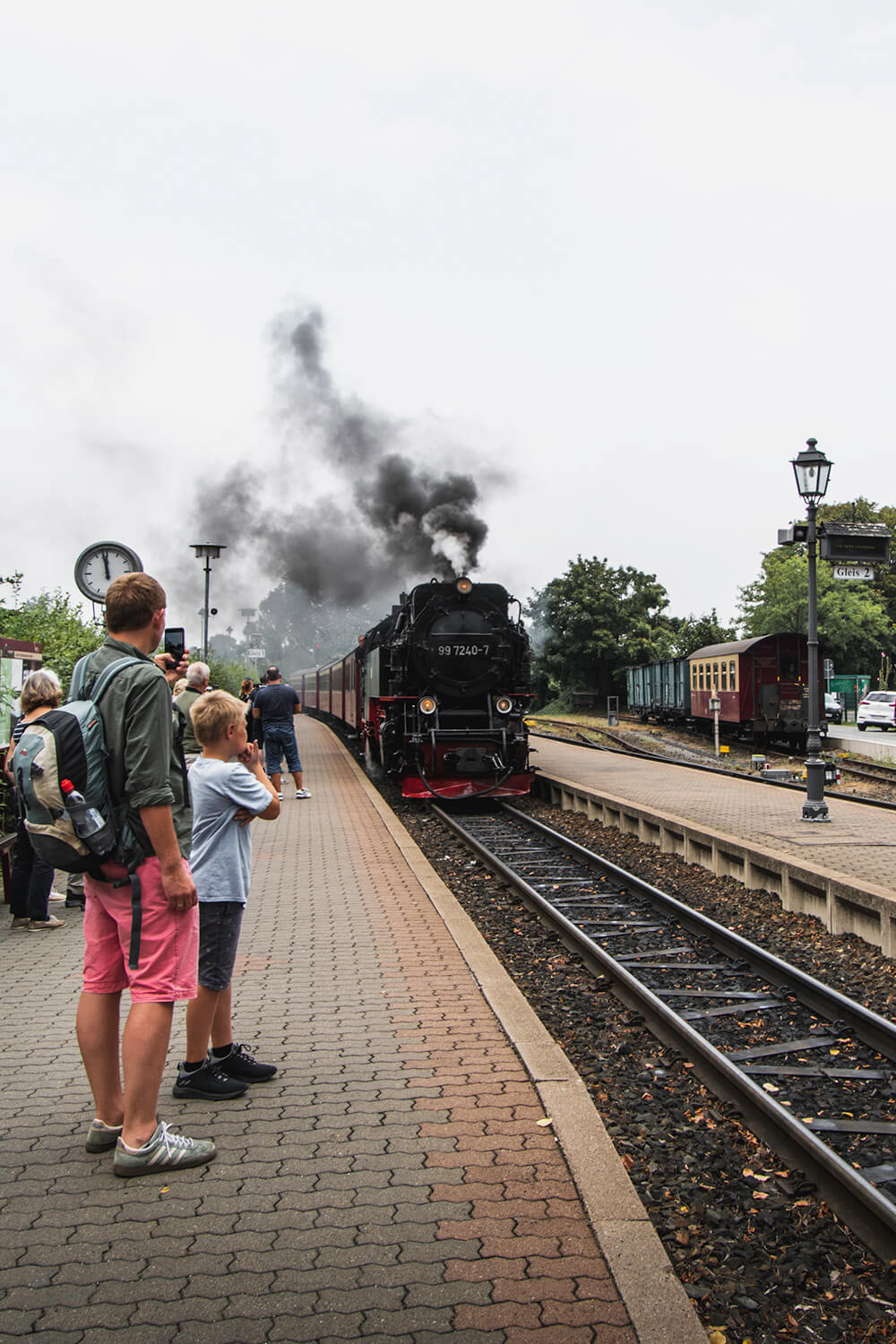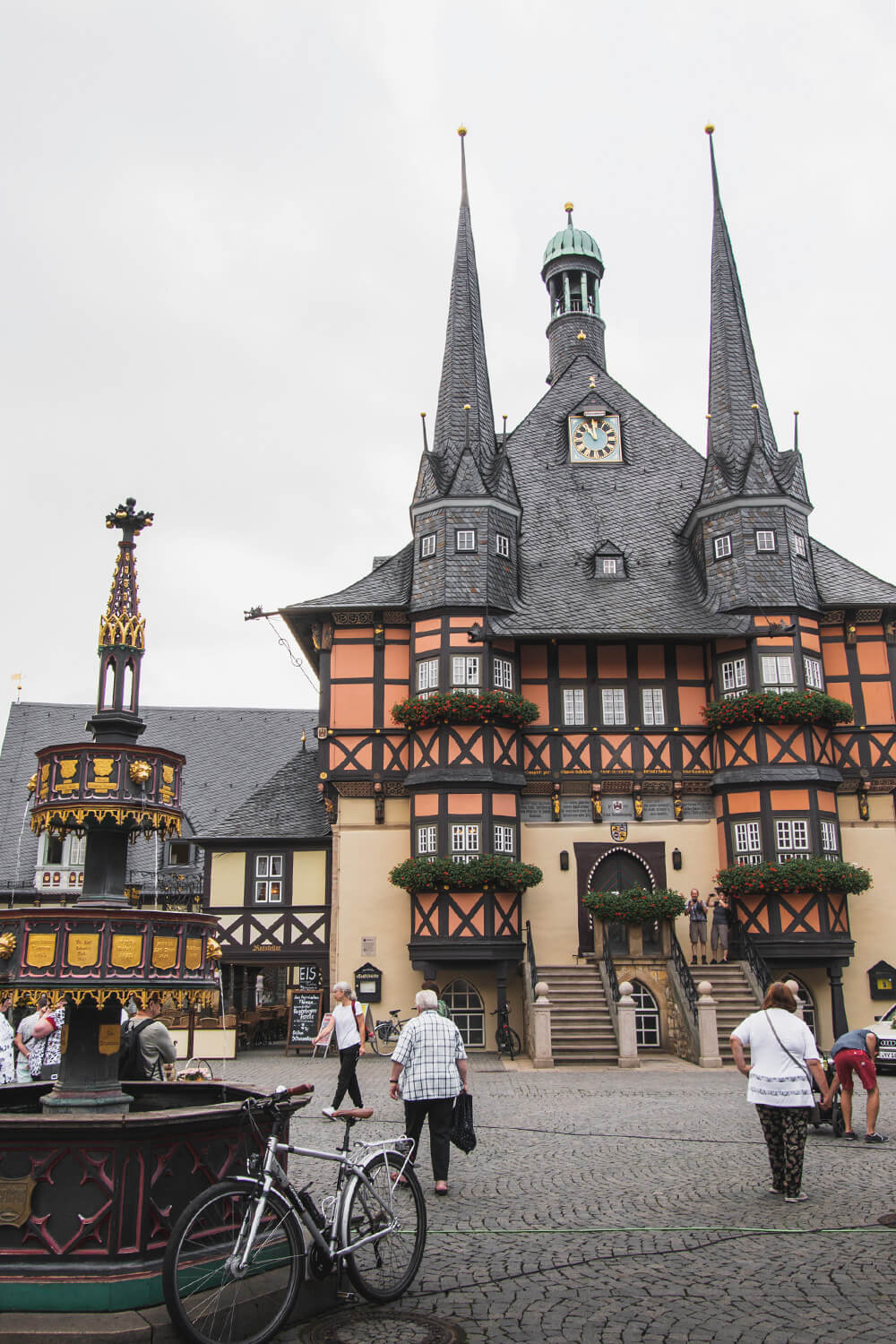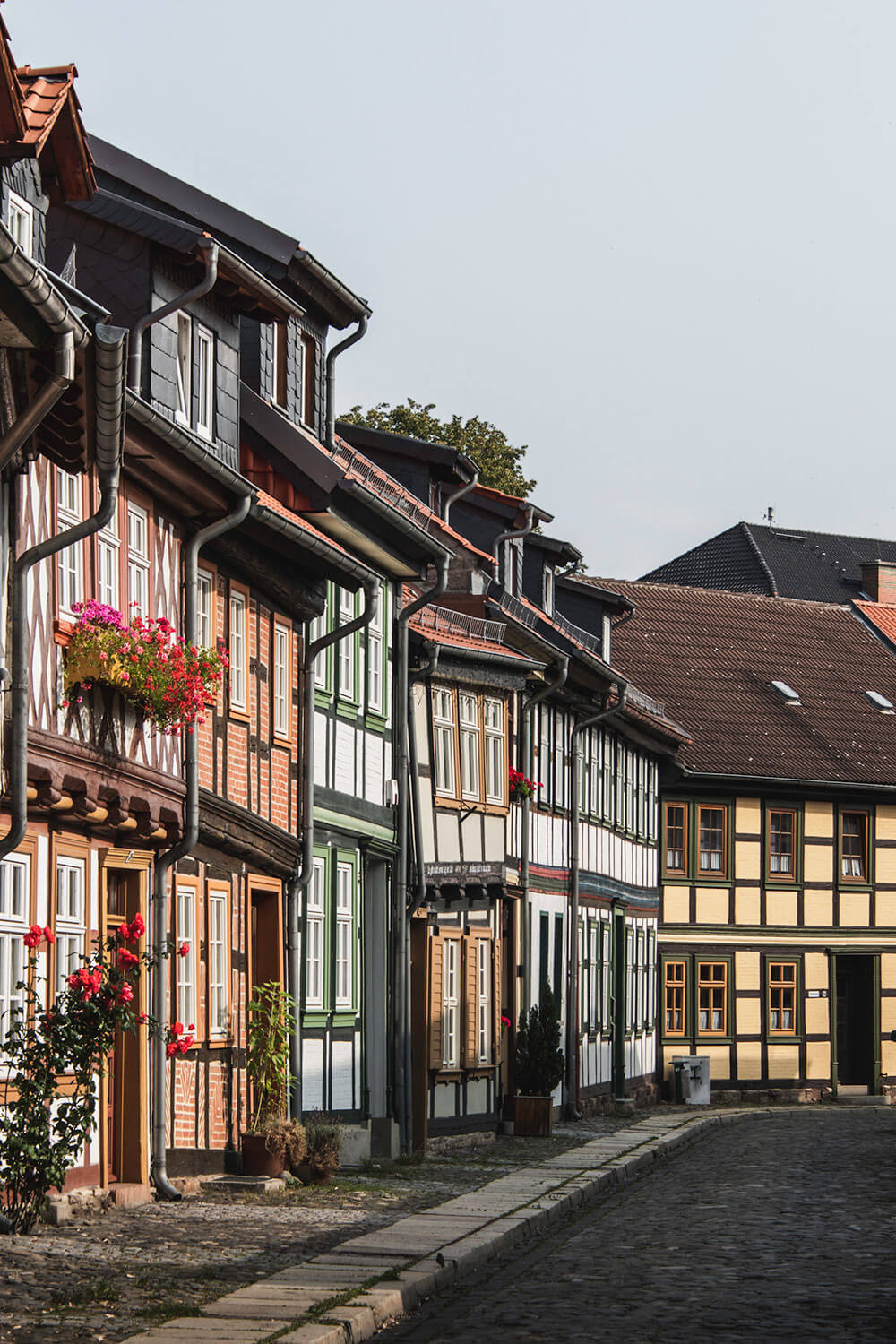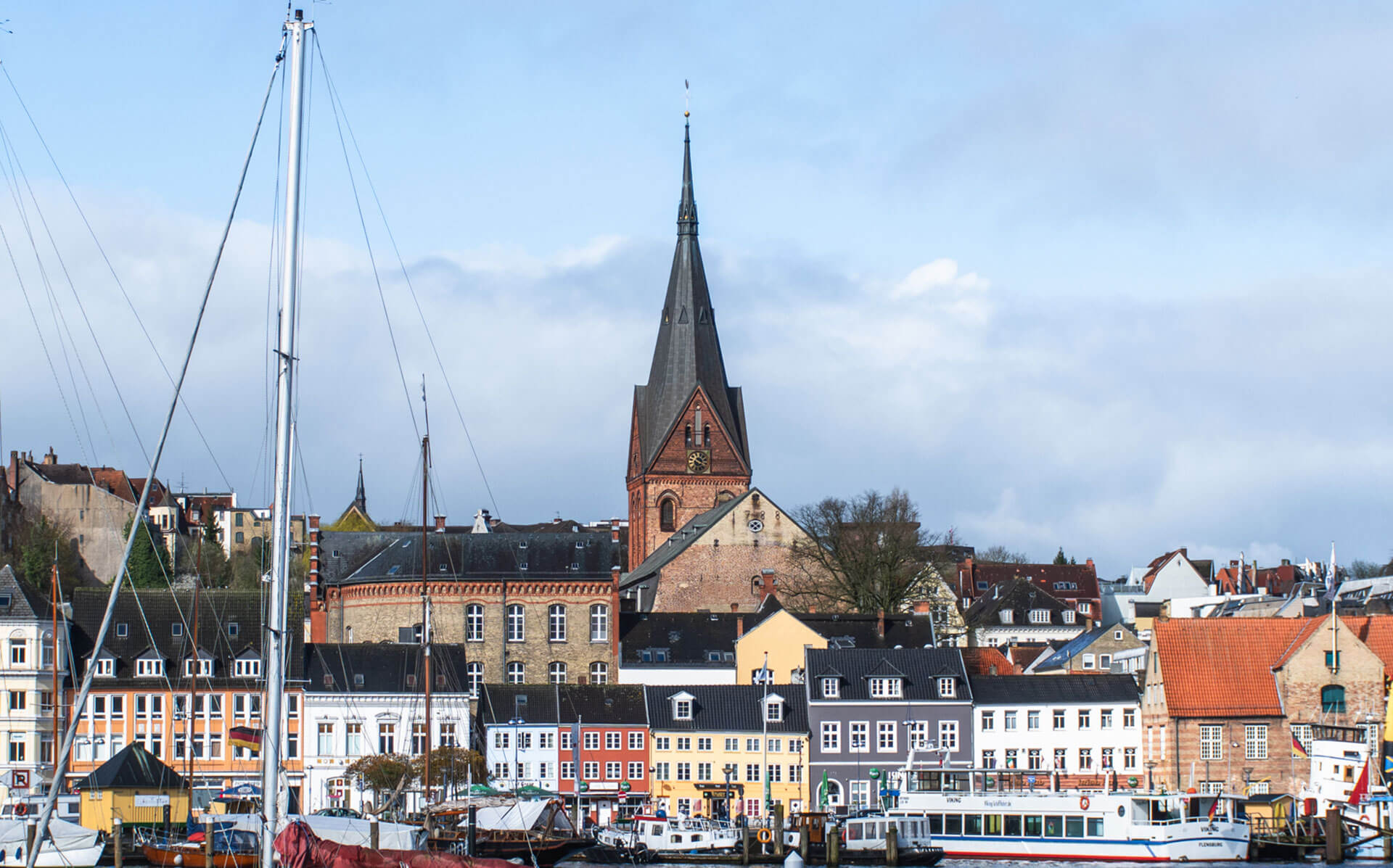Did you know that just a 4½-hour drive from the Danish border, you can experience Germany’s beautiful Harz National Park? And that in just three days in the area, you can go from the deepest depths of the Rammelsberg Mine all the way up to 1,141 meters at the highest peak in the Harz, Brocken? And that in just three days in the Harz, you can embark on incredible adventures – not just for hardcore outdoor enthusiasts but for the whole family to enjoy? It’s true – read on to see what our little trio experienced on our 3-day adventure in late August.
Sponsored collaboration with Harzer Turismusverband
We were invited on a trip to the Harz region to explore the stunning medieval towns of Goslar and Wernigerode, the 3,000-year-old Rammelsberg Mine, ride a steam locomotive up to Northern Germany’s highest peak, Brocken (also known as Bloksbjerg), and visit Sahlen Thale Erlebniswelt.
We were eager to experience the Harz, which we had heard was breathtakingly beautiful, but none of us had visited before. Our expectations were more than fulfilled! We explored, relaxed, soaked in the views, challenged ourselves, and, most importantly, had an amazing family adventure.
Three days in the Harz were all we had this time, but if you’re planning a trip there, here are five incredible adventures we highly recommend!
But first… on the road again!
On the road again
There’s no doubt that we love road trips. We love road-tripping because, in many ways, it gives us a great sense of freedom. Sometimes, we set off without knowing exactly where we’re going – just to experience, see, talk, and enjoy the world we encounter along the way. And, of course, for the places we reach and explore.
Our journey to the Harz began on an August morning at 6 AM. We usually get up early so we can cover as many kilometers as possible before the morning traffic through Jutland takes over. Luckily, none of us suffer from morning grumpiness – especially not when we have a trip ahead of us. So the mood was high – just as it was on this August morning.
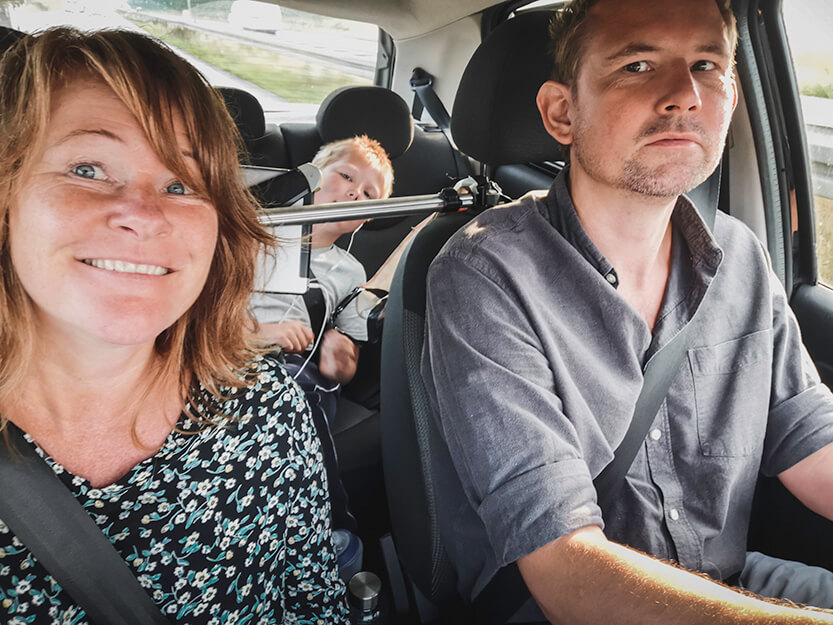
We left at 6:30 AM, and it was just around 2 PM when our car rolled over the cobblestones of the old medieval town of Goslar, nestled at the foot of the beautiful Harz mountains.
Beautiful, historic Goslar – the town at the foot of the Harz Mountains
As you drive through northern Germany and the first mountains start appearing on the horizon, you know you’re getting close to the Harz region. Located southeast of Hanover and Hildesheim, the Harz Mountains begin to rise as soon as you turn east off the E7. After hours on the German highway, the sight of the mountains sparked great excitement among us all. This is one of the things we love about traveling – the thrill of arriving at a new destination. New adventures always await, and it’s that joyful anticipation we cherish.
It wasn’t immediately obvious from our air-conditioned car, but despite it being late August, the heat was intense when we arrived in Goslar – 33°C in the shade! We checked into our lovely hotel, Hotel Alte Münze, and quickly headed into town to explore where we had landed this time.
Goslar unfolded before us with stunning medieval houses and buildings, cobblestone streets, slate roofs adorned with intricate patterns, vibrant flowers, and a calm everyday life. The city moved at its own quiet rhythm, with schoolchildren and locals going about their daily errands, adding to its authentic charm.
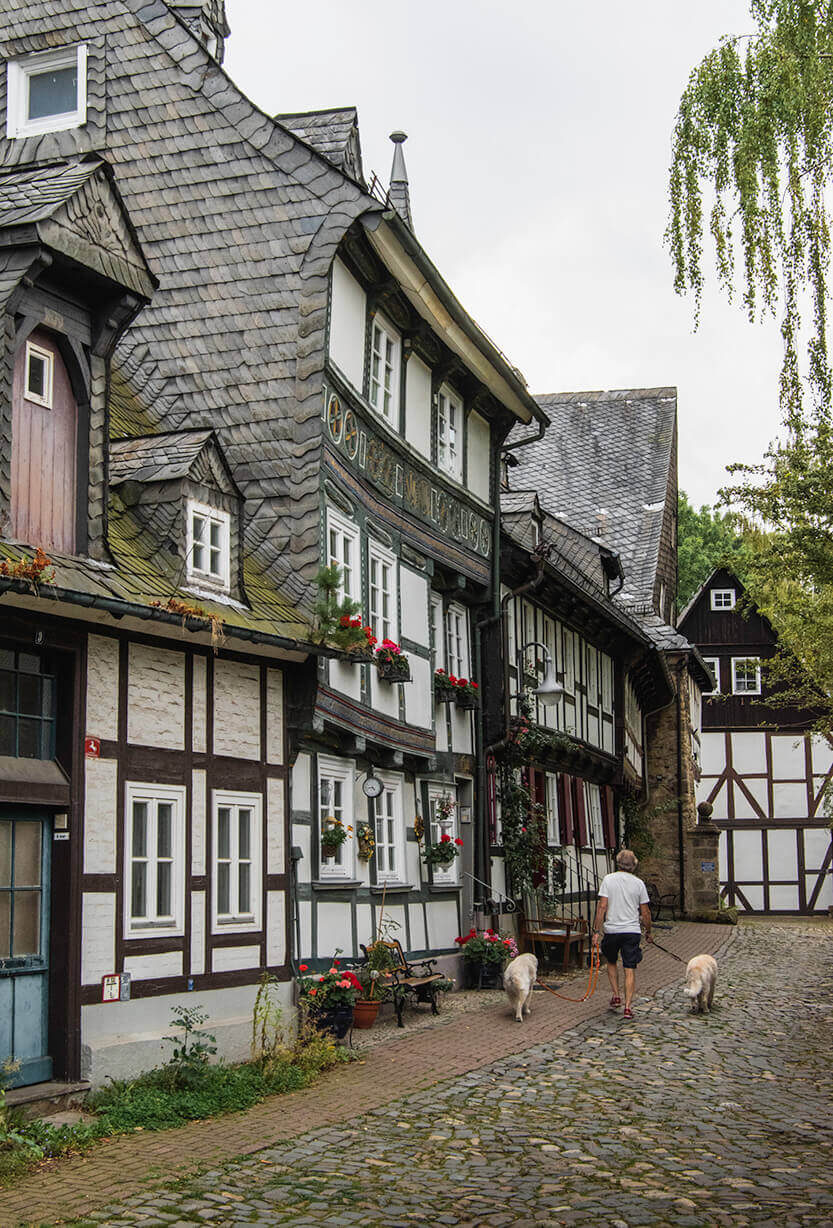
The many old streets in the historic part of the city wind around market squares, shops, restaurants, and grand buildings, bearing witness to Goslar’s long history as an imperial city, a minting city, a bustling everyday town, and now also a tourist destination. Goslar is truly beautiful! And I completely understand why so many people travel to the Harz each year to explore this charming place.
When we visited in late August, the city wasn’t overly crowded with tourists, and we felt we could experience Goslar in peace and at our own pace.
The historic center of Goslar was added to the UNESCO World Heritage List in 1992 – and for good reason. The narrow, winding streets and the magnificent historic buildings owe their existence to the old Rammelsberg Mine (which is also a UNESCO World Heritage Site). The town’s architectural beauty and rich history are undeniably remarkable.
In the heart of Goslar, right on Marktplatz Goslar, we found ourselves a shaded spot. From here, we had the perfect view of both the old town hall and the Kämmergebäude, which, just as we arrived, began its charming Glockenspiel performance.
Is there anything better than experiencing a new city from a cozy café with a cold Gose beer (brewed in Goslar), a giant ice cream for the kid, and simply watching life unfold around you?
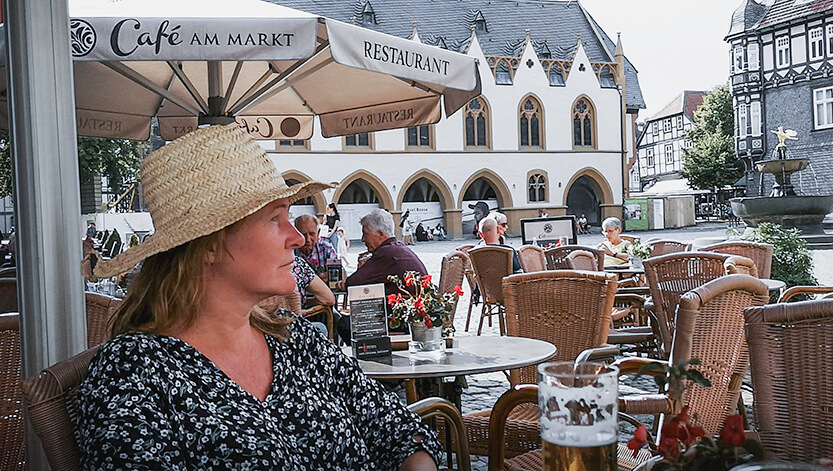
The historic houses in Goslar truly take you on a journey back in time – back to the Middle Ages when miners toiled in the Rammelsberg Mine, laying the foundation for Goslar’s historical wealth.
The city’s architecture spans several styles, from Romanesque, Gothic, and Renaissance all the way to modern-day design. Each house has its own unique character and tells its own story. It’s fascinating to see the different decorations adorning each building, showcasing the craftsmanship and history embedded in Goslar’s streets.
For me, the most charming thing about Goslar was the stunning mountains visible even from the heart of the town. I love it when nature almost spills into a city – it creates a special atmosphere. That’s exactly the feeling I got here, standing on this street and seeing the mountains rise beautifully at the end.
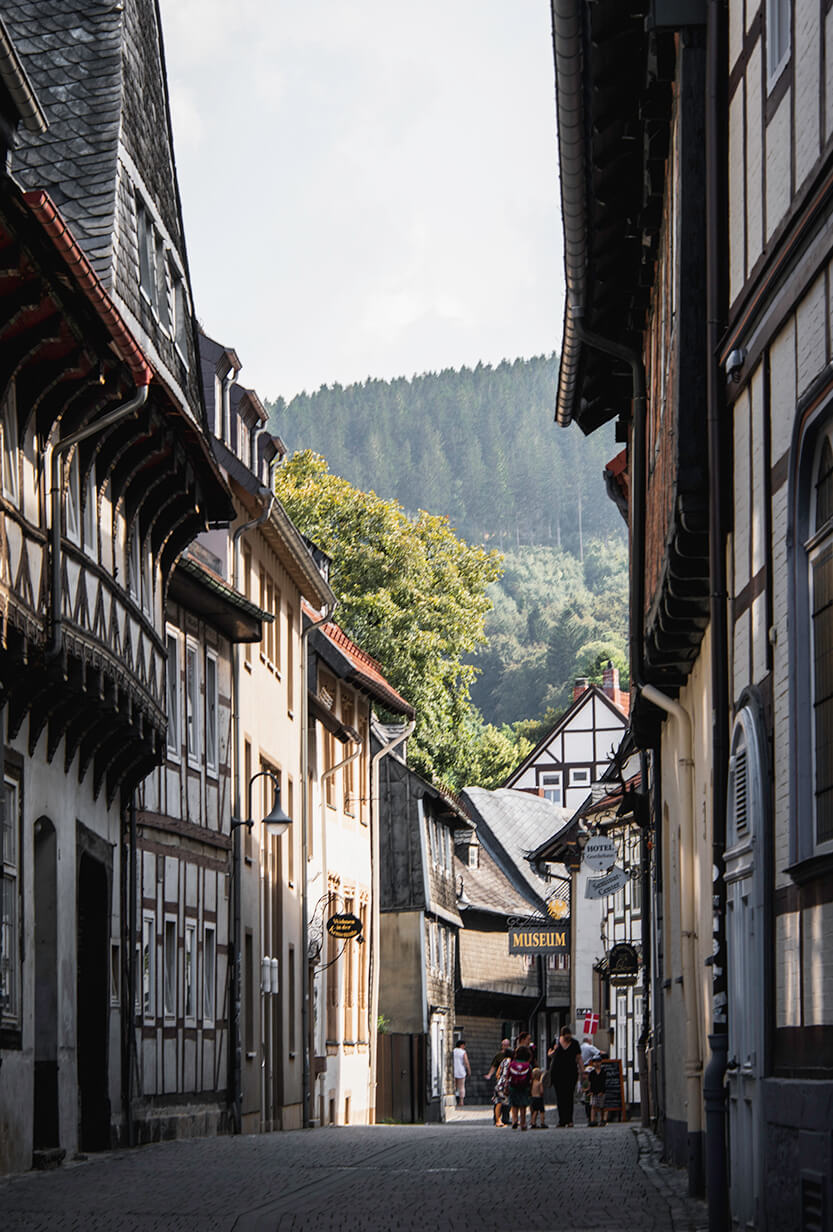
Explore the 3,000-year-old Rammelsberg Mine
A 3,000-year-old mine? How is that even possible? It’s almost unimaginable that, thousands of years ago, people started digging into a mountain just because they noticed a patch where no trees grew – leading to the discovery of valuable minerals beneath the surface. Important resources like ore, zinc, copper, gold, and silver were extracted here. Incredibly, mining operations continued for over 1,000 years until the mine finally closed in 1988.
We had the chance to visit this extraordinary place – both at the top of the mine, deep inside the mountain, and far down into its underground tunnels. And what an adventure it was!
The Rammelsberg Mine tells the long and powerful story of the miners who spent weeks away from their families, working in the dark, harsh conditions below the earth. It tells of the solidarity among the mining families, where women supported each other with childcare and household duties while the men worked underground. It speaks of shared celebrations and communal meals, bringing people together despite the hard realities of mining life. It tells of strong bonds, where those who fell ill were cared for and families who lost loved ones in the mine were supported by the community.
Located just outside Goslar, the Rammelsberg Mine stretches beneath the mountain, with its historic buildings nestled against the steep slate cliffs, guarding the deep tunnels that have shaped its history.
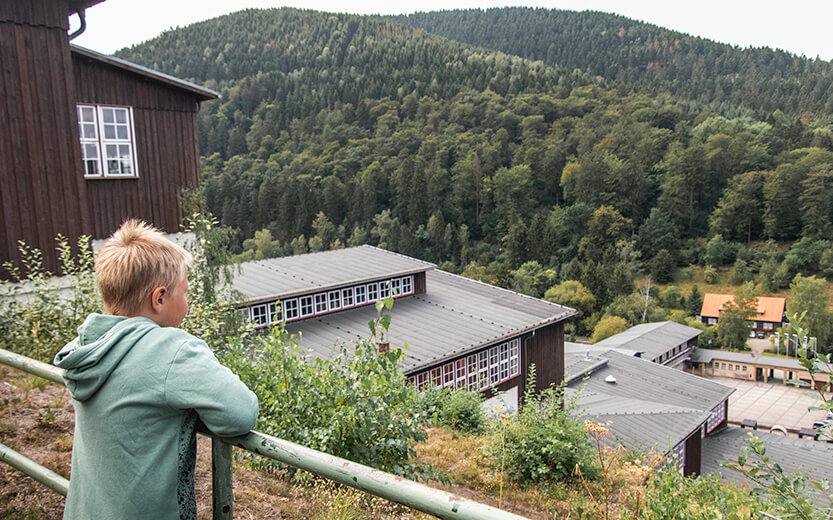
Besides being designated a UNESCO World Heritage Site, it becomes obvious when visiting Goslar and Rammelsberg just how crucial the mine has been to the Harz region – especially to Goslar. The mine has played a significant role in the area’s history, shaping its economic, historical, and social culture in ways that are still evident today.
But what was it actually like to experience the mine? Many people have asked me afterward if it wasn’t unsettling to be inside a mountain, deep underground, in narrow tunnels. And honestly, I had my concerns before going in. How would it feel to have tons of rock above us? What if I suddenly felt claustrophobic in the middle of the mountain? And what about Sebastian – how would he handle it?
To my (and our) great surprise, being inside the mountain wasn’t uncomfortable at all. It was a bit chilly (around 12°C), but we had come prepared with an extra sweater or poncho. Sebastian handled it just fine, and even when he had to climb up metal ladders with a deep shaft below him, he took it all in stride.
The mine has stood for centuries, the walls feel incredibly solid, there’s plenty of fresh air, and overall, we felt completely fine down there.
The only thing we really had to overcome was the small yellow mine trains that took us deep into the mine itself. These were the very same trains that miners once rode every morning to reach their workstations underground. The trains are incredibly small, and once inside the mine, you can’t see a thing. Thankfully, we were prepared for the pitch darkness and the deafening noise that came with the ride.
The experience couldn’t have been more different the next day, when we took the historic steam locomotive from Westerntor in Wernigerode all the way up to the summit of Brocken, also known as Bloksbjerg…
Ride the steam train to Brocken
Witches may be able to fly to Bloksbjerg in a single Midsummer’s Eve, but for us mortals, there’s another way to reach the summit – aboard the historic steam train!
One of the most iconic ways to ascend Brocken, the highest peak in the Harz Mountains, is by taking the old steam locomotive, offering a scenic and nostalgic journey through dense forests and breathtaking landscapes.
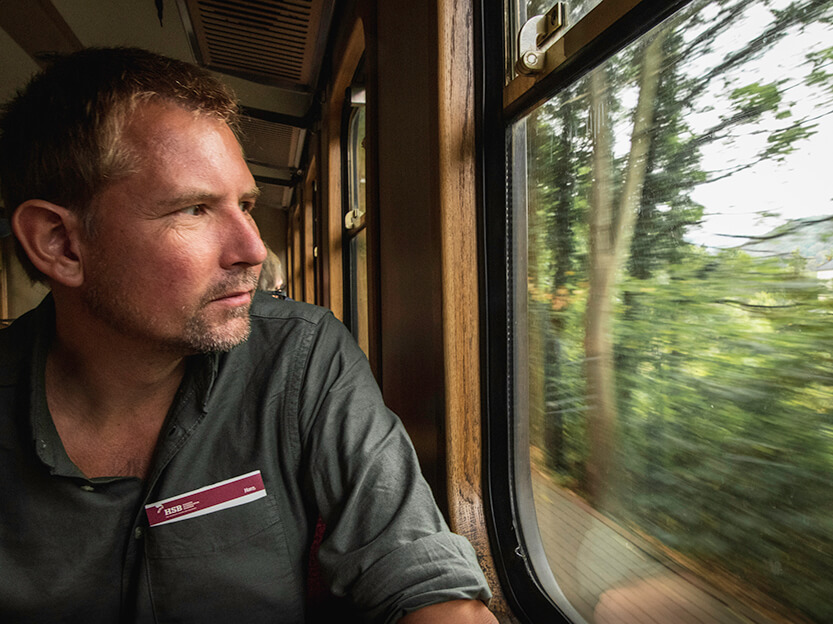
This 140 km-long steam train adventure begins in an entirely different town – Wernigerode, located a bit further east of Goslar. Here, at the small Wernigerode Westerntor station, you’ll find the historic steam locomotives from 1897, which are still in operation today, taking passengers all the way to the summit of Brocken (Bloksbjerg).
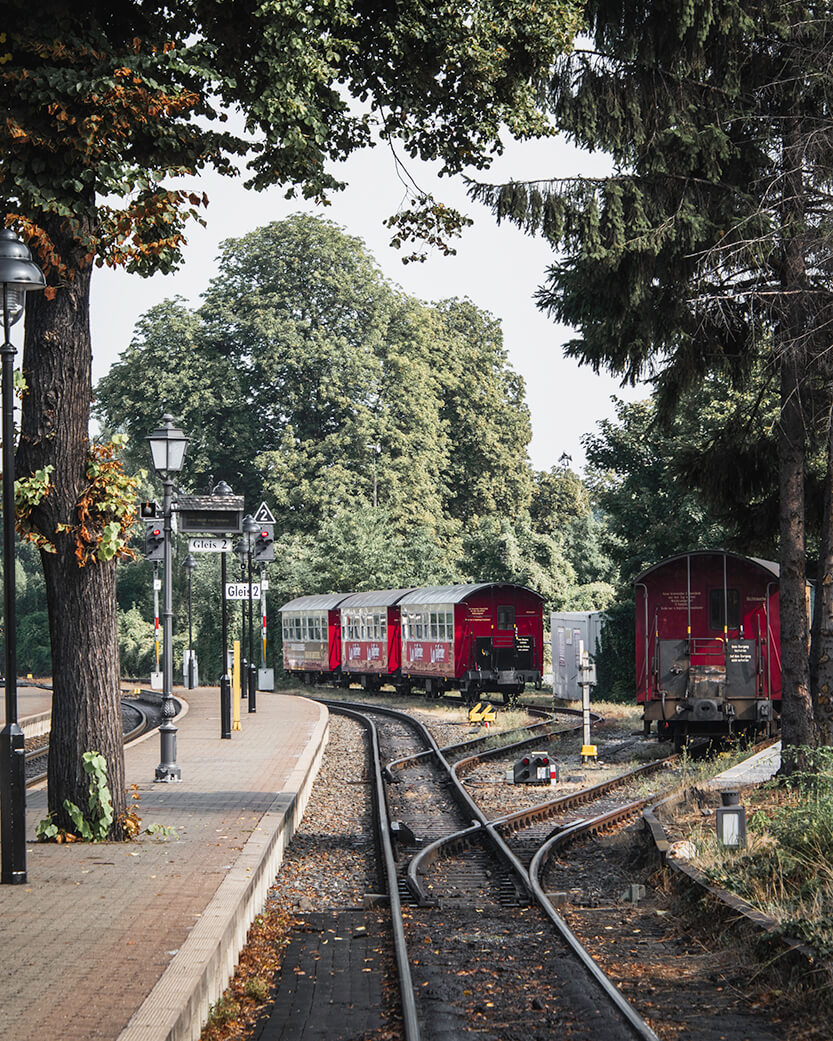
The steam locomotive takes you up through forests and trees, offering breathtaking views along the way. As the train chugs steadily uphill, it finally brings you to Germany’s highest narrow-gauge railway station, Brockenbahnhof, situated at 1,000 meters above sea level.
Some of the views can be enjoyed from inside the train’s carriages, but it’s an absolute delight to step outside, breathe in the crisp mountain air, and watch the landscape transform as you ascend.
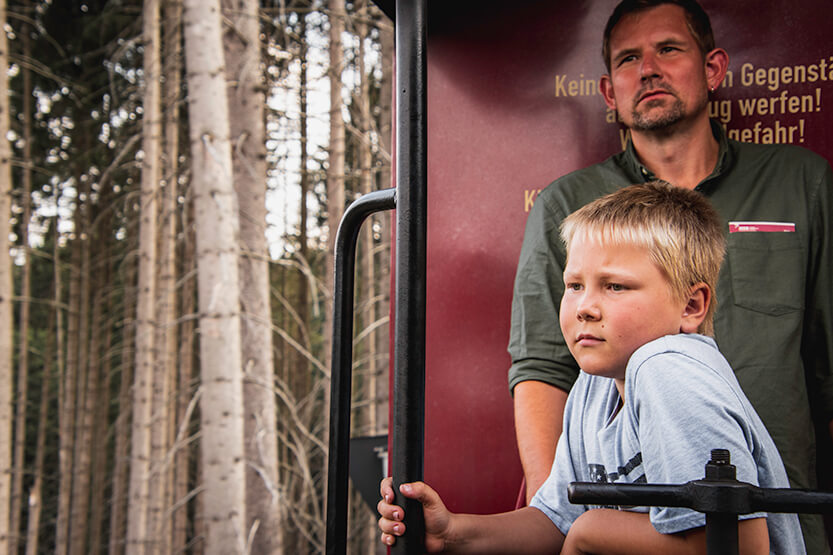
You can take the steam train back down after visiting Brocken. Standing at the summit, waiting for the locomotive to arrive, is an experience in itself. Watching (and hearing) the steam train as it winds its way up the mountain is a true delight. You can hear it, you can smell it (the coal smoke), and then suddenly, it appears through the trees of the mountain.
To reach Brocken, you can board the train in Wernigerode, but you can also hop on or off at Drei Annen Hohne, among other stops. The journey from Wernigerode Westerntor takes about two hours each way.
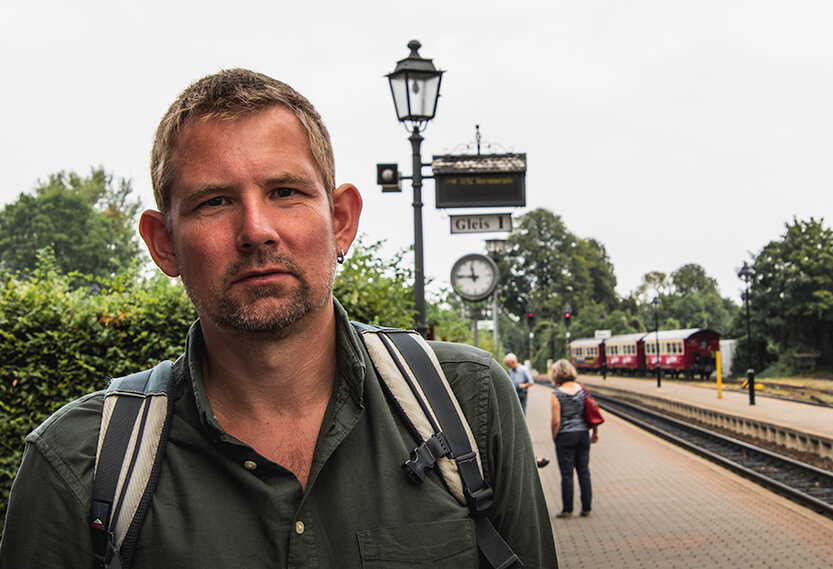
But what were we actually doing up on that mountain? And was the two-hour steam train ride through smoke and soot really worth it?
Well, aside from picking up a bit of coal dust in our hair and on our clothes, it was absolutely worth it – a fantastic day adventure. Just take a look here to see why…
Be captivated by Harz’s highest peak – Brocken
The Harz Mountains fully lived up to their reputation for stunning, wild nature. Our journey up Brocken gave us a sense that this was just a small corner of a vast national park – a place that isn’t just breathtaking on a late summer’s day in August, but also incredibly enchanting when clouds roll in, casting silhouettes between the forested peaks.
It’s easy to imagine how magical the landscape must be in autumn, with golden foliage, or in winter, when the snow blankets the mountains.
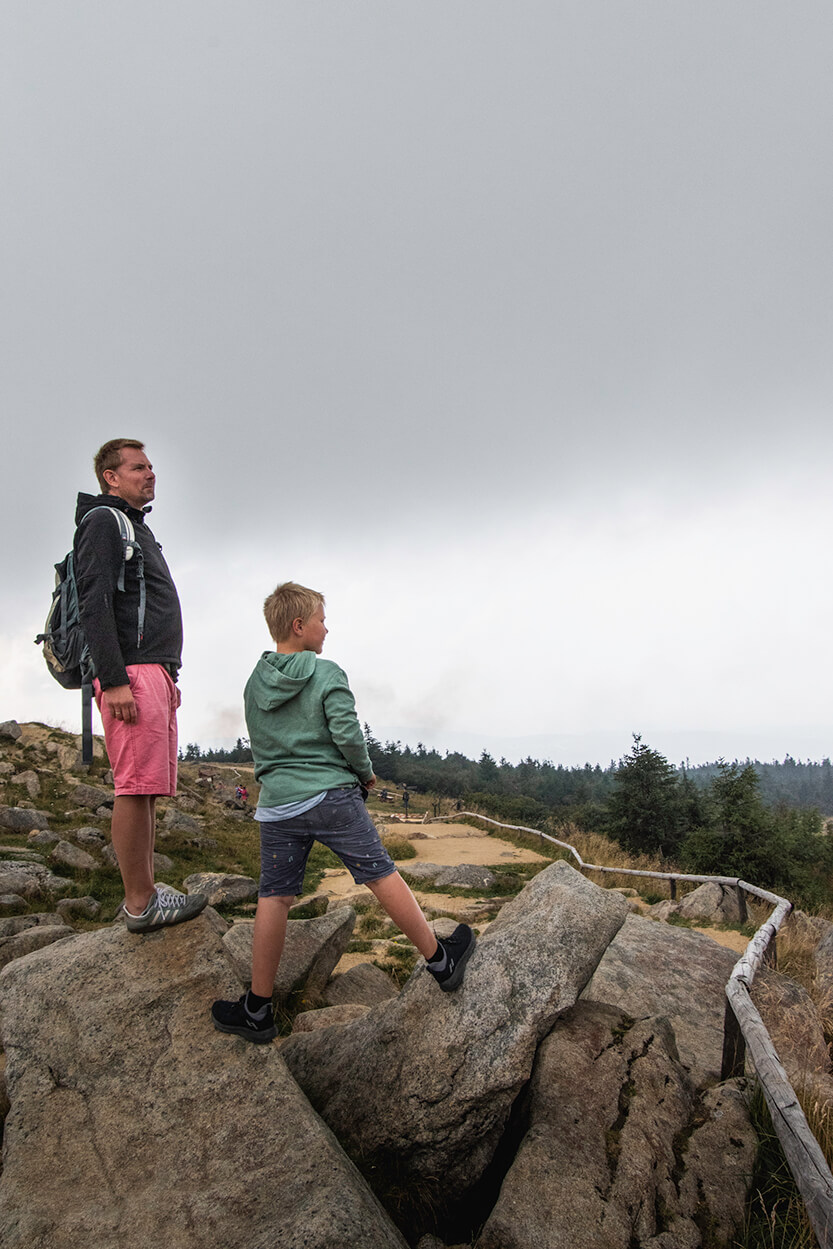
Brocken, at 1,141 meters, is the highest mountain in the Harz and northern Germany. In other words, it’s the mountain where we send our witches on Midsummer’s Eve. It’s easy to imagine how the legends of witches’ sabbaths on Walpurgis Night came to be – there is a certain magic about this place.
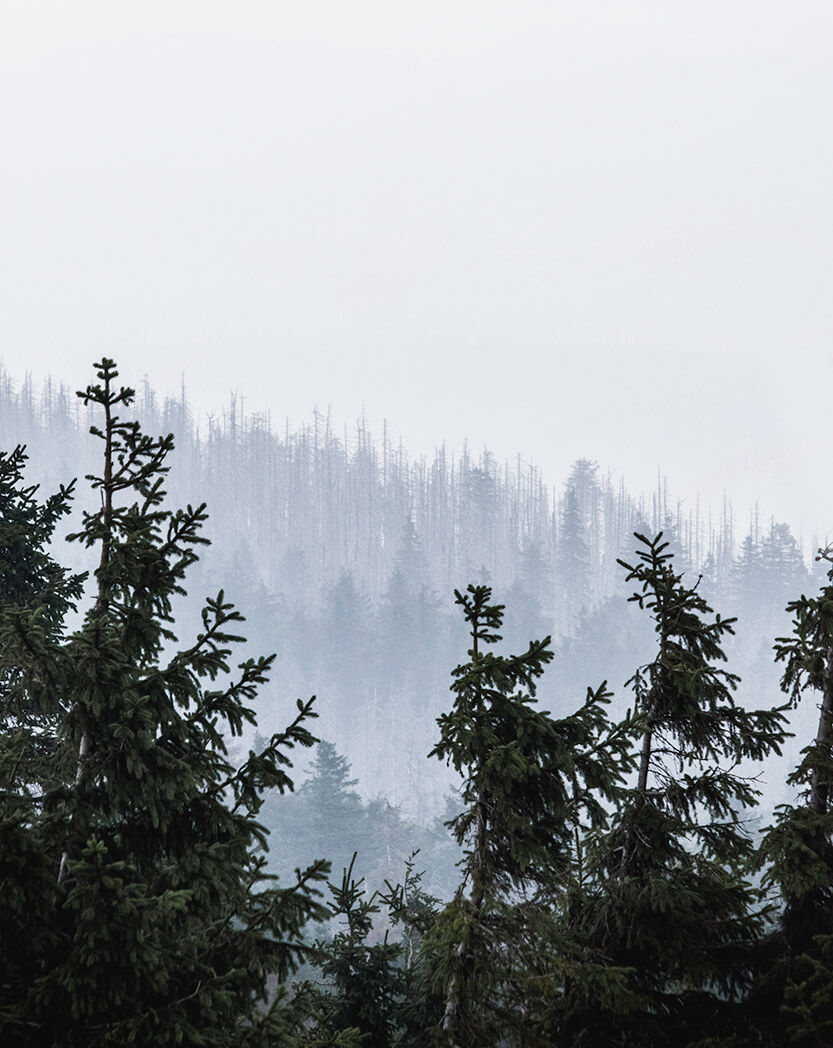
There are plenty of hiking opportunities in the Harz Mountains, including around Brocken. Many hikers stood or walked by, waving at us as we arrived on the steam train. But there are also countless breathtaking views to take in along the way.
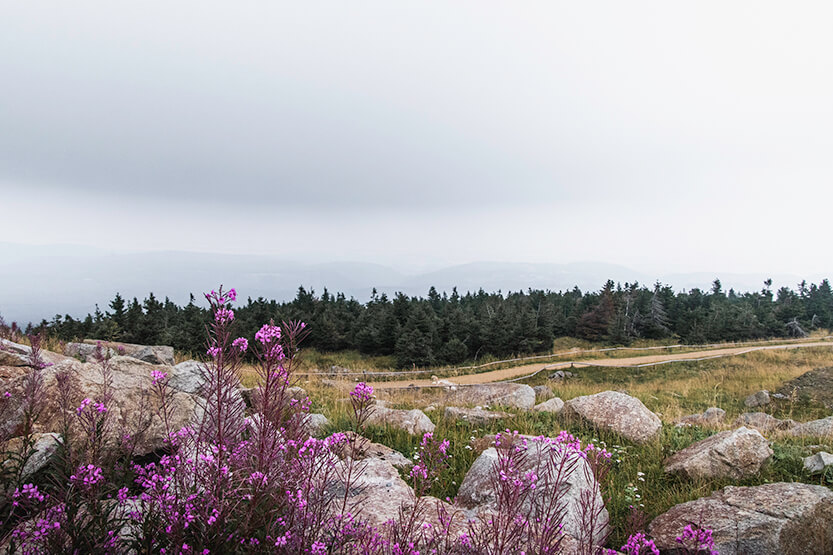
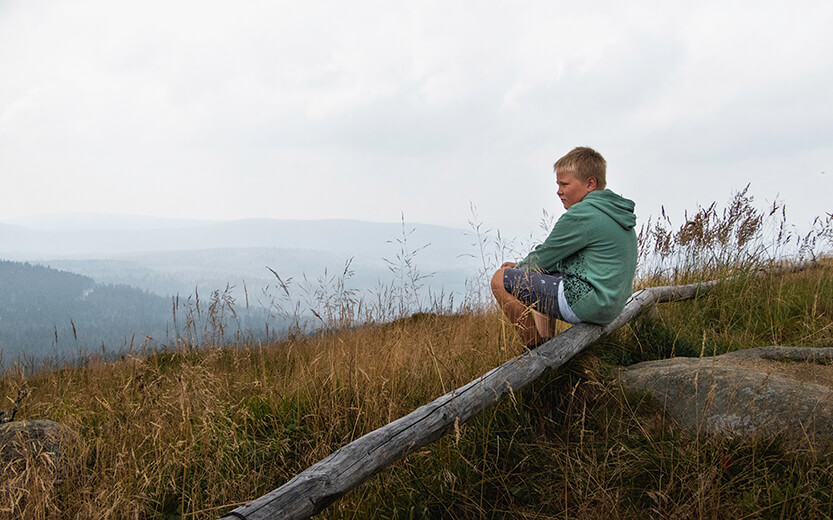
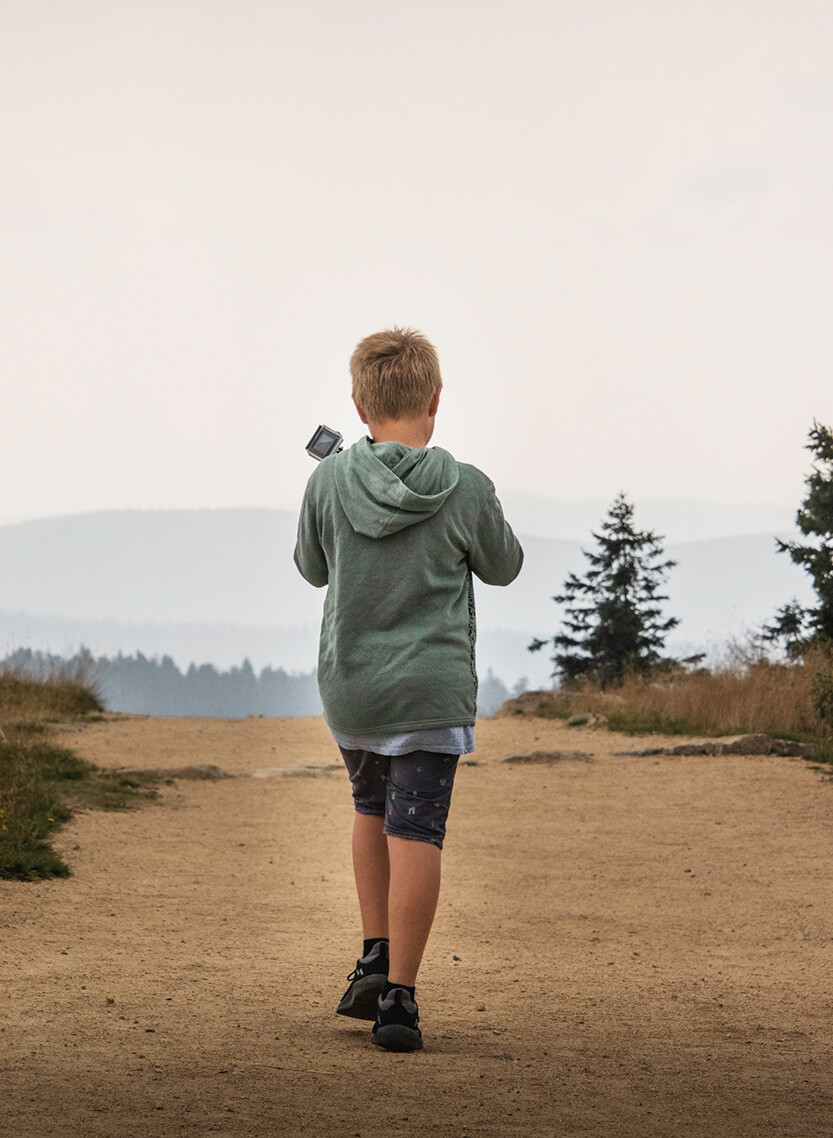
You could spend days, even weeks, exploring the Harz Mountains. This time, we only had a few hours – but what wonderful hours they were! The time we spent on the mountain left us with a strong desire to return one day, not only to experience the stunning landscapes and breathtaking views again but also to hike and truly immerse ourselves in the mountains.
Brocken gave us a sense of just how high the mountains in the Harz can be. But taking a steam train and gradually ascending 1,000 meters is one thing – choosing to ride a cable car up to Hexentanzplatz in beautiful Thale, despite having a serious fear of heights, is something else entirely. And that’s exactly what we did…
Experience something unforgettable in beautiful Thale
Both Sebastian and I have a fear of heights. It’s not something we think about in our daily lives, as it doesn’t really affect us much. I actually love challenging my fear by climbing bridges and towers whenever we travel. The same goes for the moment a plane takes off – that exhilarating feeling in my stomach as we ascend. Sebastian is also pretty good at pushing his own limits and practicing dealing with heights.
We knew before setting off that our fear of heights would be tested on our last day in the Harz. The plan was to take a cable car up a mountain. And from our perspective, it looked incredibly steep. We hadn’t talked much about it beforehand, but the moment we stood at the foot of the mountain, we definitely felt the challenge ahead of us.
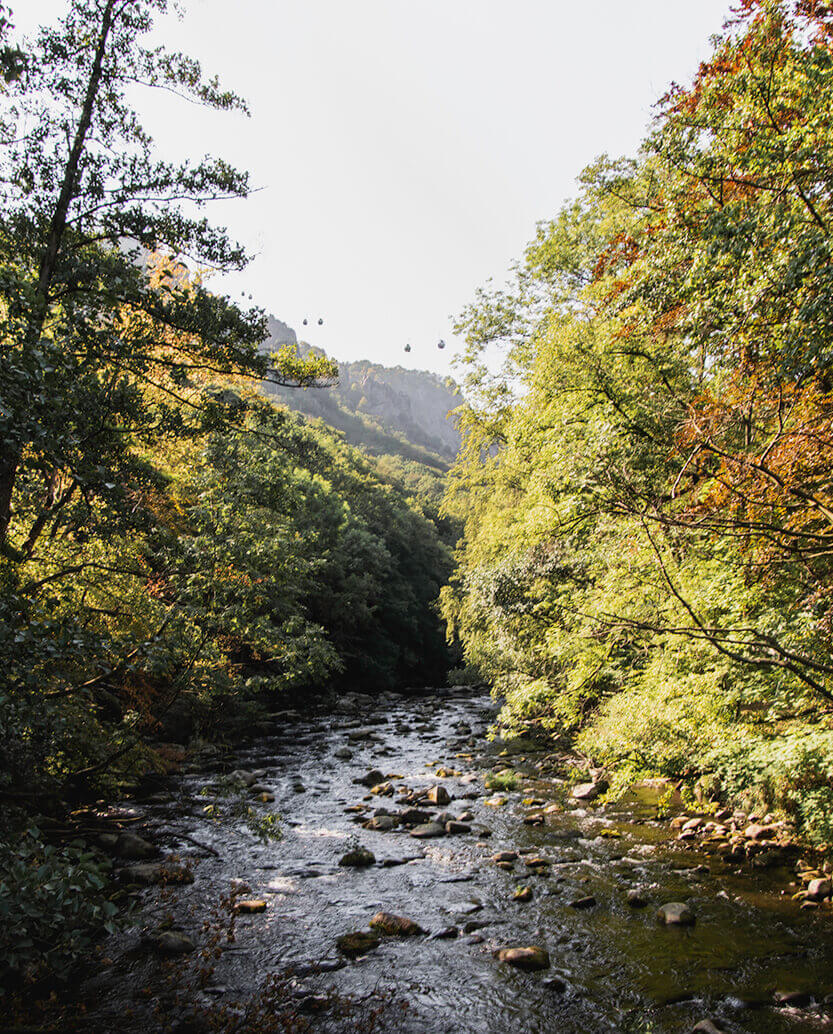
None of us could imagine how we would survive the ride up the mountain. To put it mildly, our fear of heights had hit us hard. Nevertheless, after much consideration, we decided to take on the challenge. And wow, what an incredible experience to overcome! The ride up the mountain was absolutely stunning. And yes, we did it. In fact, we even took the cable car back down – this time, we deliberately chose one with a glass floor.
Once we reached the top, we discovered an entire area called Hexentanzplatz, offering an exceptionally breathtaking view.
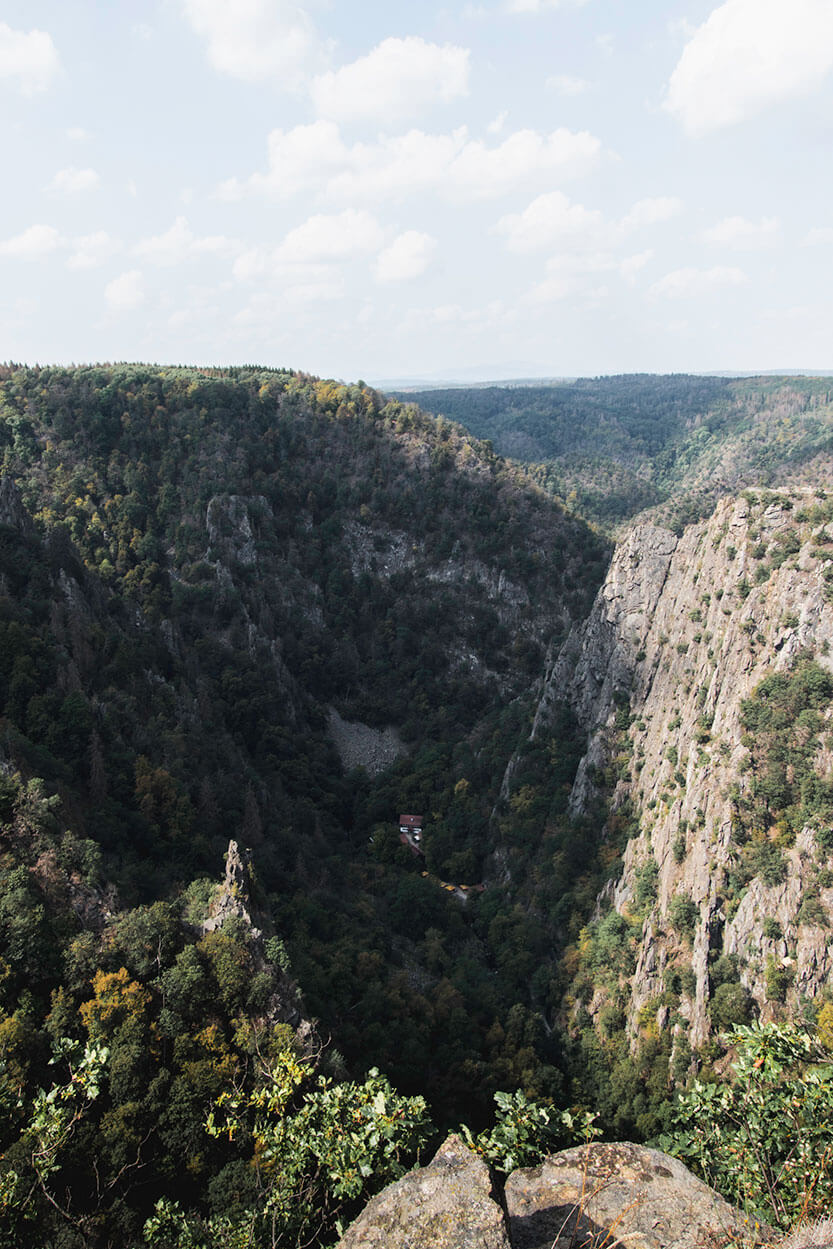
Hexentanzplatz is an area where you can experience various outdoor attractions, such as a fun park, mini golf, a water carousel, and several restaurants. We decided to try the Harzbob, a mountain coaster that speeds through the forested slopes of the mountain.
If you enjoy beautiful nature, outdoor adventures, hiking, and a fun-filled day with your family, we highly recommend exploring Sahlenbahn Thale Erlebniswelt. However, if you prefer city life, shopping, romance, and less challenging experiences, the charming medieval town of Wernigerode might be the perfect destination for you.
Experience romantic Wernigerode
Wernigerode, also known as the “Pearl of the Harz,” is a small town nestled at the foot of the Harz Mountains. The town stretches into the mountains, and if you stay at Hasseröder Burghotel, as we did, you’ll be treated to the most stunning view over the peaks. From our hotel room, we could see all the way up to Brocken.
The town itself is a charming, colorful medieval city filled with shops and cozy little streets. Wernigerode has a truly romantic feel, with its old half-timbered houses, vibrant flowers, and an impressive castle towering above the town. To complete the fairytale atmosphere, a steam train chugs through the town before disappearing into the mountains. Utterly idyllic…
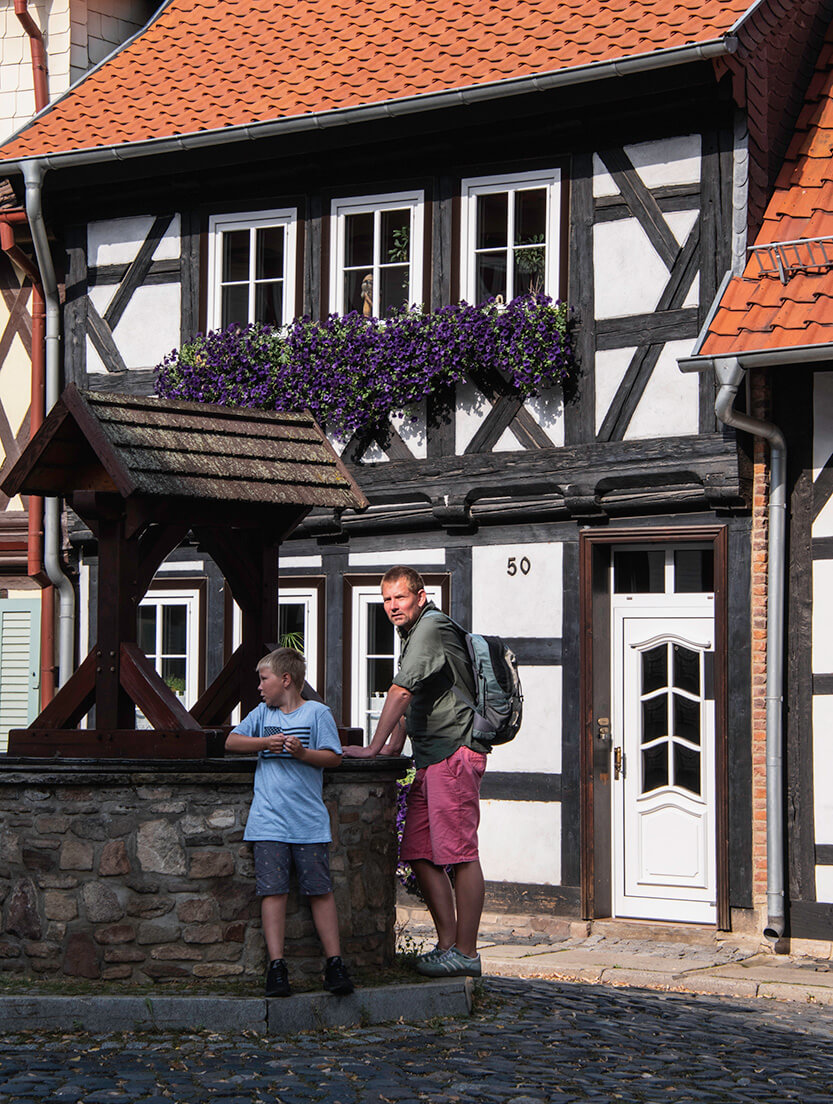
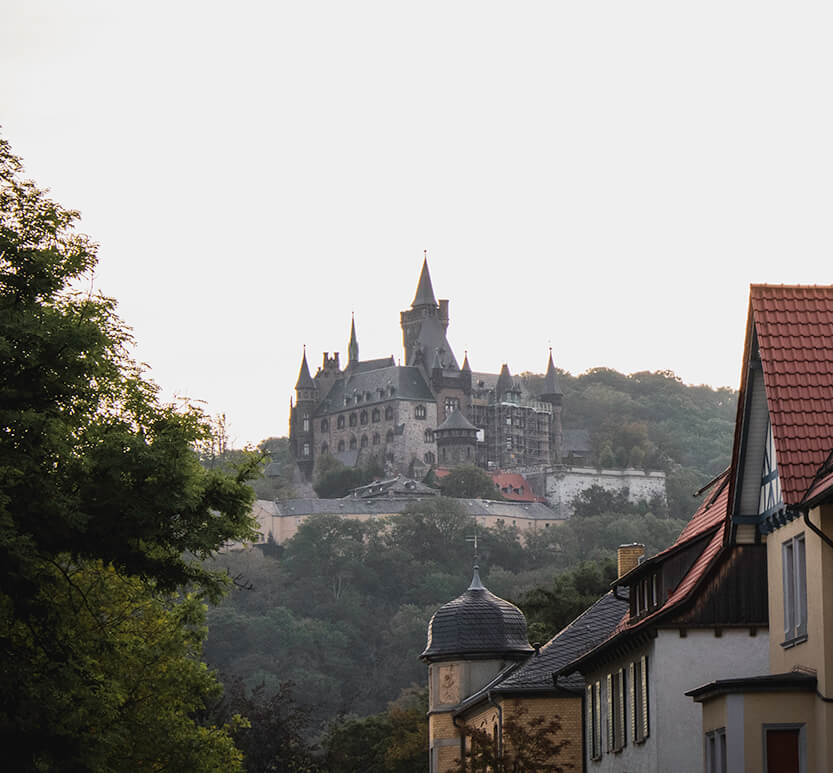
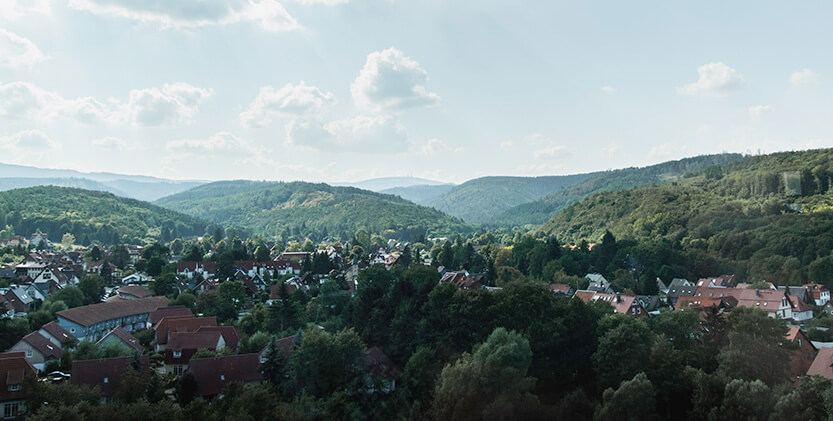
It was a five-day road trip – three days in the Harz, two days in Goslar, and two days in Wernigerode. We had an absolutely amazing trip – peaceful, relaxed, cozy, and at times challenging in just the right ways.
We’re not done with this little corner of Germany. We’ll be back…
Tips to go
Remember to bring warm clothing for the Rammelsberg Mine, as it is around 12°C in the tunnels.
Remember to bring warm clothing for Brocken, as it is often windy at the top.
Yes, there are toilets on Brocken.
Yes, you can get something to eat on Brocken.
Links
Rammelsbergminen
Casino-rammelsberg.de
Harzen Smalsporsbane (The steam train from Wernigerode)
Harzen Nationalpark
Dampfromantik
Seilbahnen Thale Erlebniswelt
Harzinfo.de
Hotel Alte Münze
Hasseröder Burghotel

